By Pat Jones | The first superintendent at the legendary old Essex Country Club was a guy named Donald Ross. Now a century later his successor, Eric Richardson, maintains his minimalist tradition by counting on Revolution.
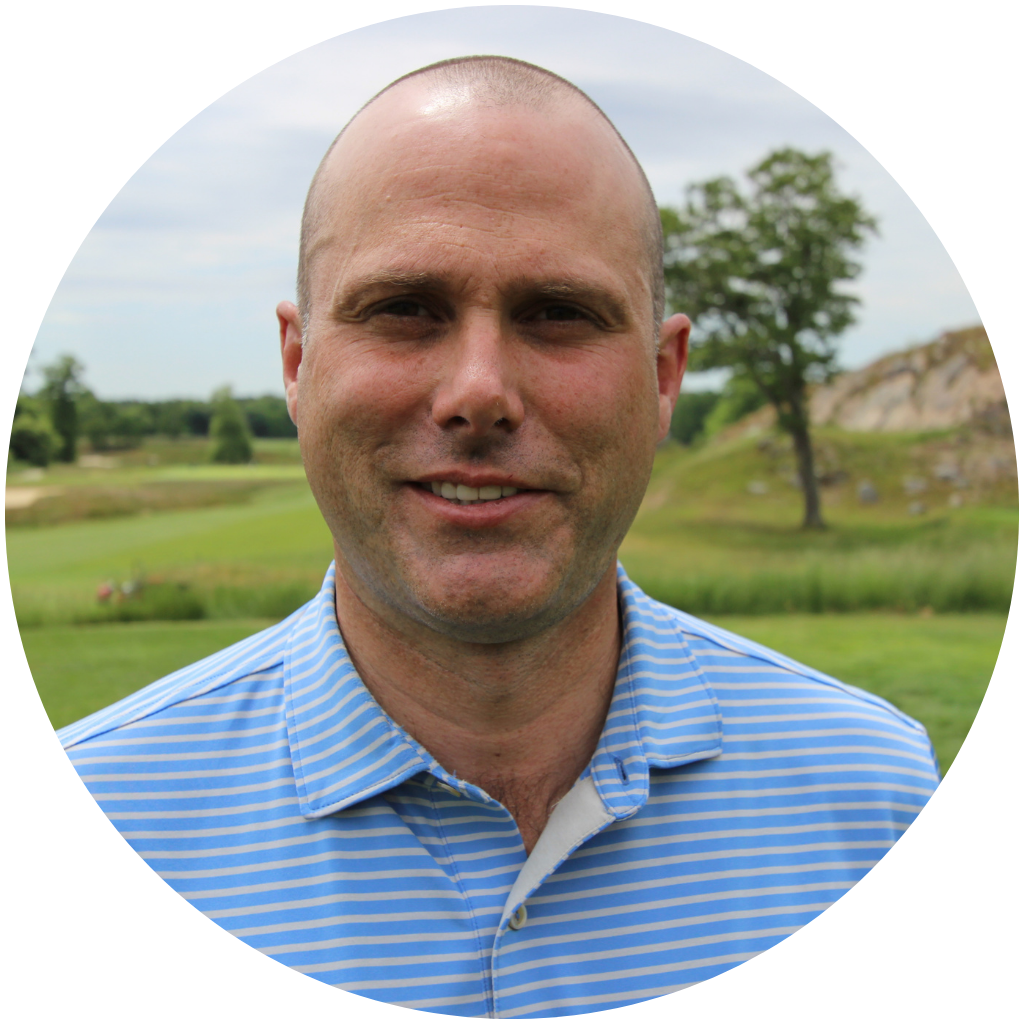
As a kid, Eric Richardson had kind of a “Green Acres” moment that shaped his life and pointed him towards our happy little industry: his family picked up and moved from LA to a small town in Michigan.
It was there that the athletic youngster was introduced to hitting shag balls off a mat in his grandpa’s backyard. He went on and played in high school and loved the game. Yet he still planned to take a different path…until turf intervened.
“My family is big on public service – my mom is a librarian, and my grandfather was a captain in the LA fire department and my aunt works for homeland security – and so I was headed to college to study criminology. But I found a part-time job on a golf course grounds crew and just fell in love with it. I fell in love with the early mornings, the routines, the sunrises and the sunsets. I was hooked.”
He switched majors and applied to the MSU turf program in 2000 and things took off quickly. First, Trey Rogers connected him with an internship at the legendary Myopia Hunt Club with longtime super Dave Heroian. “Dave was fantastic. He treated his interns like assistants, and it made us intern assistants quickly.” After school, Richardson did a stint with our friend Jon Jennings at Chicago Golf Course but was lured back to Myopia as an assistant for four years.
So, when the Superintendent job at nearby Essex County Club came open, he was intrigued but vastly inexperienced compared to other top applicants. “They gave me a courtesy interview because (Essex and Myopia) were sister clubs. I walked in one of 10 candidates and walked out as a front runner. I just connected with the membership. We saw the golf course the same way…the potential it had then and still has.”
Thus, at just 28, he became only the 6th superintendent in the club’s storied history. By the way, the first was a guy named Donald Ross who designed the place and actually served as pro/greenkeeper in the early years.
So, as he nears 15 years at Essex, we caught up with him to talk about his experiences, his focus on continuous improvement and how Revolution® has played an unexpected role in the success of his program.

It’s almost unreal to be hired at a club like Essex before you’re 30. Was it because you understood the culture so well?
I understood the culture and the personalities and what they wanted from their golf course. When I started, Essex was ranked #16 in Massachusetts. Now it’s #3 in the state and #79 in the Top 100. The members here always felt like their course was good enough to be that highly regarded and, fortunately, they gave me the resources to move forward. We’ve worked extensively with (architect) Bruce Hepner to get where we wanted. Everything we’ve done here has essentially been in-house.
Who did you rely on for advice at age 28?
I talked with Dave (Heroian) and a few peers but mostly I relied on myself. I’m good at figuring things out. That doesn’t mean I don’t fail. Any super who tells you they’ve never failed or lost grass is lying. This old course needed some TLC and some funding. The members recognized that, and they have supported us financially for all these years.
What was the biggest overall challenge?
We want fast and firm at all times. But it’s an old golf course on a heavy clay site so the course was either fast and firm or soft…there was no in-between. The other challenge has been fixing the infrastructure. We installed a new irrigation system in 2010 with Leibold and we’re starting a major drainage program to try to keep things firmer during those wet periods.

Bruce Hepner is an underrated designer. Tell us about how you work together.
Bruce deserves far more recognition than he gets. He’s so great with the membership and he gets it…he gets what the club wants to be. Mowing line changes, tree removal, the work we’ve done with tees and some of the bunkers was all Bruce and I. Bruce really should have his name included in the Top 100 rankings, but he doesn’t want it. He also has that superintendent mindset. He’s never leaving as far as I’m concerned.
How have you evolved agronomically over your time there?
We started with the greens. They make the course and they’re old push-up greens with no drainage and heavy soils underneath. So, our first move was to aggressively remove the organic matter at the top and modify the top 5-6 inches. So over 15 years of intensive topdressing we’ve essentially become USGA spec in the top 6 inches.
We have applied the same practices to the approaches and tees. Now we’re repeating the process on fairways. The goal is to try to replicate those firm and fast conditions even when it’s kind of a wet season like we’ve had this year.
So, it’s an incremental process?
It’s going to take time. We have to be realistic and operate within the parameters of the budget. It’s still a family club and we try to keep things affordable. The property, including the 11 grass tennis courts, improve a little every year. We’ve found a way to make the golf course a little better. The members have a saying that every year I give them a new golf course. That’s what we try to try to attempt every season.
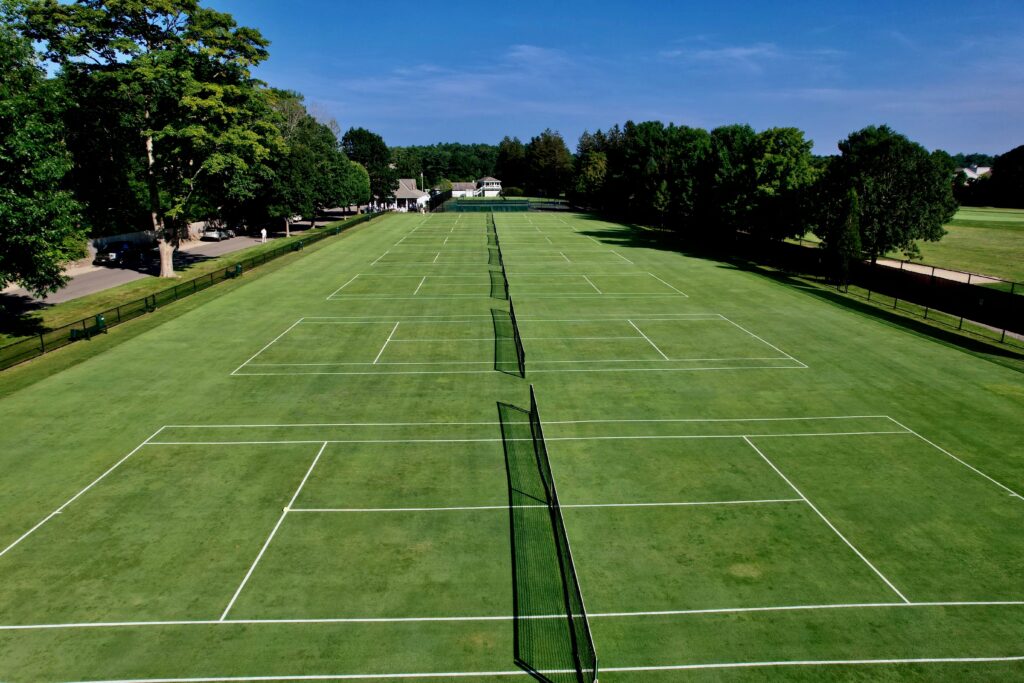
What’s changed about your program over time?
15 years ago, the shortgrass areas were 80% Poa and now it’s 60-70% bent. So over time, we’ve reduced Poa on greens and fairways, but we don’t want to eradicate the Poa entirely. We want that mottled, links, old-world look.
Our fertility program has changed exponentially. Early on, as aerating and top dressing progressed, things got healthier, so we were able to do more stuff. But as we aerated, we actually opened up old thatch layers and fairy ring exploded. Suddenly we were fighting it all over the place.
Yikes!
That’s where the Revolution program started here at Essex. Fighting fairy ring on fairways, tees, grass courts and greens. The buried thatch layers started breathing and fairy ring just took off. As it started getting hydrophobic, we tried every wetting agent in the book. Revolution was the only wetting agent that would adhere to that soil particle and help us fight those hydrophobic conditions on those fairy ring spots. It eliminated the problem pretty quickly.
But what started off as Revolution fighting fairy ring then morphed into more of a conditioning program as the disease diminished. We started testing different rates and intervals to create the conditions that we wanted.
How so?
We’ve been able to reduce applied water by 50-60% on greens and time needed to hand water by 60-70%. We’ve also found that we don’t need as much fertility. I’m a very low nitrogen (N) user. I like my plant lean, mean, and not green. Revolution helps me to do that without having to feed greens all the time. We only apply a 10th of a pound of N for the entire summer. The majority of our N inputs are timed with aeration to promote recovery during the spring… After that, we want the plant as lean as possible. The more growth you have, the slower and softer the conditions are.
“It’s the one wetting agent we put out that I don’t feel like the golf course is soft the next day. If I had to guess I think it binds itself to the soil particle so tightly it leaves a little more space for oxygen around it. Most people use wetting agents to keep things moist. We apply them to keep things dry. “
And that impacts disease outbreaks too, correct?
It reduces disease consistently. Dry turf is happy turf.
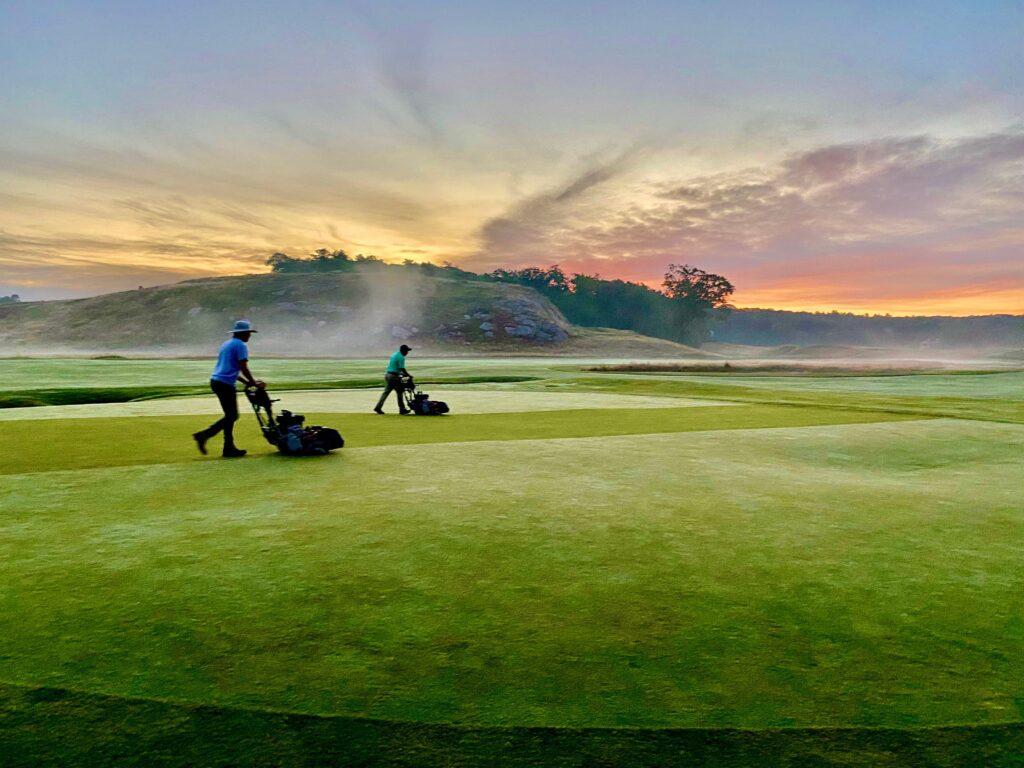
How did all this manifest itself for your members?
It’s all about consistency. The greens are push-ups so there will always be some inconsistency in the soil make up no matter how much you top-dress. It allowed us to create consistent conditions on greens with different turf varieties and different soil structure.
Before, the heavy clay soil fairways were really wet or really dry – there was no in-between. Revolution was the only product we could put out that allowed us to get some water infiltration and still have firm fairways. It’s not cheap to regularly apply Revolution on your fairways but when the membership is excited about the conditions you’re providing, it’s worth every single cent.
Who’s had the most influence on you and your career?
My brother, Kevin, who’s also a superintendent at Bear Hill GC in Stoneham, Massachusetts. He overcame 2nd and 3rd-degree burns on 60% of his body at age 12. Now he’s a great father of three, a talented superintendent, and a good man. Also, Val Somers, Seth Romans, and Steve Prinn – my last three Grounds Chairs – and I swear I am not kissing their rear ends, they are truly like family. Don Hearn. Executive Director of GCSANE, who’s a former super, past GCSAA president. Everything he does is professional and pure class. My fellow local superintendents like Jonathan Wilbur (Myopia Hunt), Russ Heller (William Devine/Franklin park), Chris Donato (Bass Rocks), Peter Rappoccio (Concord CC), Dave Johnson (The Country Club of Brookline) and Bill Rocco (Salem CC). Finally, David Heroian, my former superintendent at Myopia who passed in 2014. He was a mentor, father figure, and the best human being I have ever known.
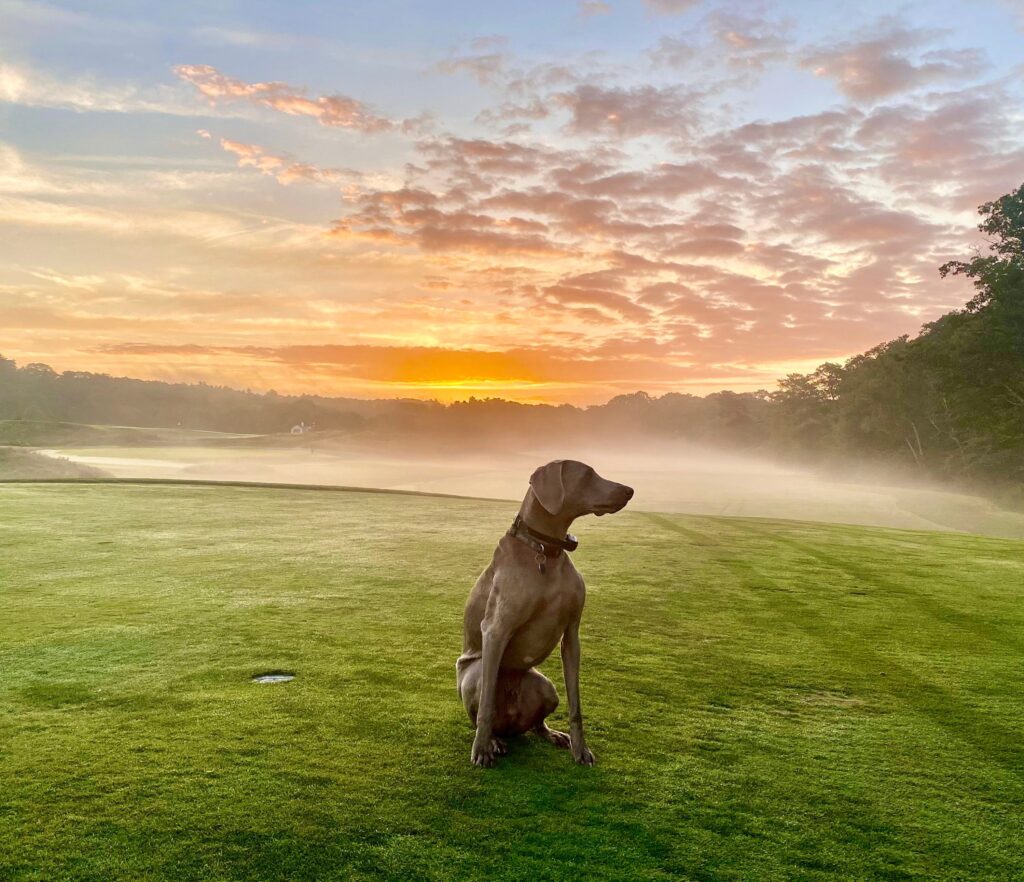
Tell us about your family.
I have two kids; my daughter Alyssa is 13 and my son Tyler is 10. I met my wife Mary at Michigan State. We met while we were both skipping class one fine fall day and we’ve been together ever since. She literally is the reason I’m a success. She’s the support system. This isn’t a job, it’s a lifestyle. You have to commit to that and having a partner like Mary makes is work.
That’s great because it’s been a tough couple of years.
People are burnt out. When COVID hit, we didn’t stop. There was no break. And like most clubs we sent people home so the handful of us that were still here had to work harder. Then it continued into 2021 which, weather issues aside, has been “the year of lack of labor.” So, for most supers, the story is you survived the pandemic and worked your butt off, but the course is still booming, and you don’t have enough help. Guys are having to do more and work more hours because they’re understaffed. People are just wiped out.
So how do you fix it?
We’re trying to build a grassroots program at the vocational schools around here to promote our business and careers in turf.
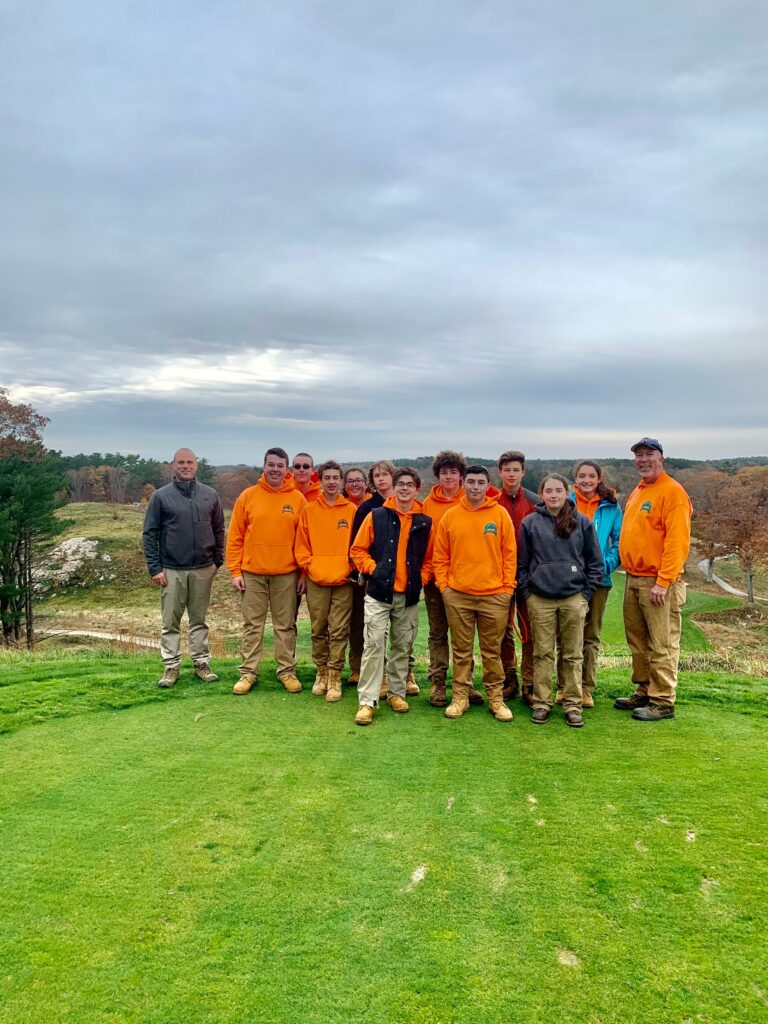
I’ve been on the Essex technical school advisory board for six years for their turf and landscape program. We host a field trip every October and bring in 15-16 kids – including many women, which are needed – and they have fun.
We put them on rollers and fairway mowers, and we show them what we do. We sell it. We can’t afford to wait for college for people to get into turf. We have to make sure people know about it in high school. We need to invest in the grassroots level.
That’s a pretty big-time commitment. Why is that so important?
Because I love what I do, and I love this business. I see it going down the wrong path based on a lack of help. When a superintendent has enough support, the job is amazing. But when you’re stretched thin and haven’t had a day off in 4-5 months, that’s not healthy. Bad decisions get made when you’ve been burnt out for a while.
I find that many supers consider themselves coaches, first and foremost. Are you in that camp?
Very much so. You have to inspire every day. We’ve had 30 inches of rain in three months. It stinks but you have to try to fire them up and let they know that they’re appreciated. That’s one more thing that happens when we get burnt out. It becomes tougher to be that inspirational leader and coach when you’re exhausted. But you have to do it because it’s your job to put some pep in their step every day.
Last question: after nearly 15 years at Essex, is your viewpoint of agronomy getting narrower or broader?
Broader. We just don’t do the same thing over and over. We always try to find a way to improve. Sometimes it’s just one little trick or tip, but we’re always looking to be more efficient. We don’t work in a vacuum. Things change constantly and you have to adapt. That’s what makes it fun.


Comments are closed.